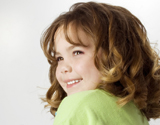
 Miller Children's Subspecialty Group provides many services for infants, children and adolescents age newborn to 21 years old. Some of these services are delivered as part of a child's routine care while others occur on an as needed basis. Most of these services are covered by your insurance carrier. In the event that it is not, you will notified. Please call to schedule an appointment. We are happy to answer any questions you have about the services we provide.
Miller Children's Subspecialty Group provides many services for infants, children and adolescents age newborn to 21 years old. Some of these services are delivered as part of a child's routine care while others occur on an as needed basis. Most of these services are covered by your insurance carrier. In the event that it is not, you will notified. Please call to schedule an appointment. We are happy to answer any questions you have about the services we provide.
Common Conditions
- Abdominal Pain
- ADD/ADHD Evaluation and Treatment
- Allergies
- Amblyopia
- Appendicitis
- Asthma
- Atopic Dermatitis
- Autism
- Behavioral Consultations
- Blocked Tear Ducts
- Bowlegs
- Bronchiolitis
- Casting for Uncomplicated Fractures
- Cerebral Palsy
- Cleft Lip and Palate
- Clubfoot
- Congenital Cataracts
- Congenital Heart Defects
- Conjunctivitis
- Constipation
- Crohn's Disease
- Croup and Other Respiratory Disorders
- Developmental Screening
- Down Syndrome
- Ear Infections
- Encopresis
- Failure to Thrive
- Flatfoot
- Fractures
- Gastroesophageal Reflux in Children and Infants
- Hay Fever
- Heart Murmur
- Hip Dysplasia
- Hypertension
- Immunizations
- Inflammatory Bowel Diseases
- Irritable Bowel Syndrome
- Lactose Intolerance
- Learning Disabilities
- Liver Disease
- Management of Chronic Illness in Children
- Migraines/Headaches
- Movement Disorder/Tics
- Muscle Disorders
- Myopia
- Pediatric Cardiology
- Pediatric ENT
- Pediatric Pulmonology
- Pediatric Rehabilitation
- Pediatric Rheumatology
- Perthes Disease
- Physical Therapy
- Pneumonia
- Scoliosis and Spinal Deformity Surgery
- Seizures and Epilepsy
- Sleep Disorders
- Spina Bifida
- Spinal Cord Injuries
- Sports Physicals
- Strabismus
ADD/ADHD Evaluation & Treatment
Attention deficit disorder (ADD) and attention deficit hyperactivity disorder (ADHD) are common behavioral disorders that affect up to 10 percent of children in the US. We provide comprehensive evaluations for children who exhibit symptoms of inattention or hyperactivity that affect their school or home life for an extended period of time. These evaluations include a complete physical examination, medical history, and behavior and development analyses.
Treatment for ADD and ADHD focuses on managing symptoms through medication and behavior therapies. Our doctors will work with your child to determine which type of treatment will benefit him or her best.
Asthma
Asthma is one of the most common recurring childhood conditions and involves a temporary narrowing on the airways as a reaction to certain stimuli. The narrowed airways cause difficulty breathing and wheezing. It is important to develop an effective treatment plan for your child's condition based on his or her age and individual needs. Asthma treatment for children may include an inhaler, a home nebulizer, anti-inflammatory medication and bronchodilators. Our doctors will work with you and your child to help effectively treat this long-term condition.
Atopic Dermatitis
 Atopic dermatitis, a form of eczema, is a chronic skin disorder that causes dry, itchy skin and often results in a red rash. It is most common in babies and children, and tends to affect those with a family history of allergies and asthma, although the actual cause is unknown. Atopic dermatitis can affect different areas of the skin, but is most commonly found on the face, neck, arms and legs. It is usually mild and can go away on its own, but may be more severe if it affects a larger area.
Atopic dermatitis, a form of eczema, is a chronic skin disorder that causes dry, itchy skin and often results in a red rash. It is most common in babies and children, and tends to affect those with a family history of allergies and asthma, although the actual cause is unknown. Atopic dermatitis can affect different areas of the skin, but is most commonly found on the face, neck, arms and legs. It is usually mild and can go away on its own, but may be more severe if it affects a larger area.
Although atopic dermatitis cannot be cured, it can usually be treated and controlled simply through using moisturizing lotions, avoiding harsh soaps and controlling scratching.
Blocked Tear Ducts
Dacryostenosis, commonly known as a blocked tear duct, is a result of an improperly formed tear duct that obstructs the tear drainage system. The tear duct, or nasolacrimal duct, drains tears from the eye to the inside of the nose. When the duct cannot drain the tears, they have nowhere to go and may collect in the eye and cause irritation. This common condition affects up to 20 percent of newborn babies.
Tear ducts that are blocked from birth usually clear up on their own within a year. Symptoms may not be noticeable until after a few weeks, but can include tears pooling in the eyes or draining down the eyelid and cheeks, discharge from the eye or reddening of the skin around the area. These symptoms may only be noticeable when tears are stimulated, such as while crying or in cold or windy weather.
Treatment for a blocked tear duct is usually simple and may include massaging the tear duct or antibiotics if an infection is present. Most blockages will be cleared on their own by the time the child is a year old. Surgery may be required, but is rare.



